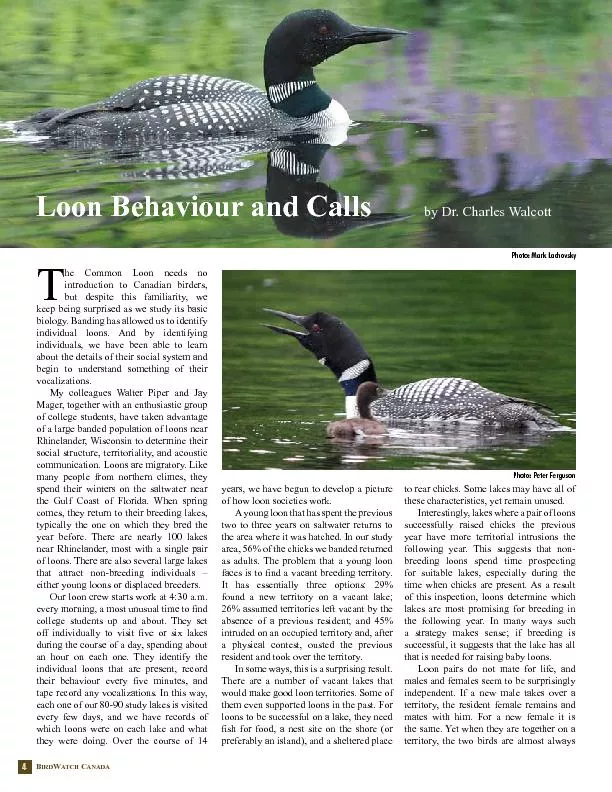PDF-he Common Loon needs no introduction to Canadian birders, but despite
Author : test | Published Date : 2016-06-22
ATCh Photo Peter Ferguson together except when actually incubating When a female intrudes on an existing territory the resident female does battle while the male
Presentation Embed Code
Download Presentation
Download Presentation The PPT/PDF document "he Common Loon needs no introduction to ..." is the property of its rightful owner. Permission is granted to download and print the materials on this website for personal, non-commercial use only, and to display it on your personal computer provided you do not modify the materials and that you retain all copyright notices contained in the materials. By downloading content from our website, you accept the terms of this agreement.
he Common Loon needs no introduction to Canadian birders, but despite: Transcript
Download Rules Of Document
"he Common Loon needs no introduction to Canadian birders, but despite"The content belongs to its owner. You may download and print it for personal use, without modification, and keep all copyright notices. By downloading, you agree to these terms.
Related Documents














